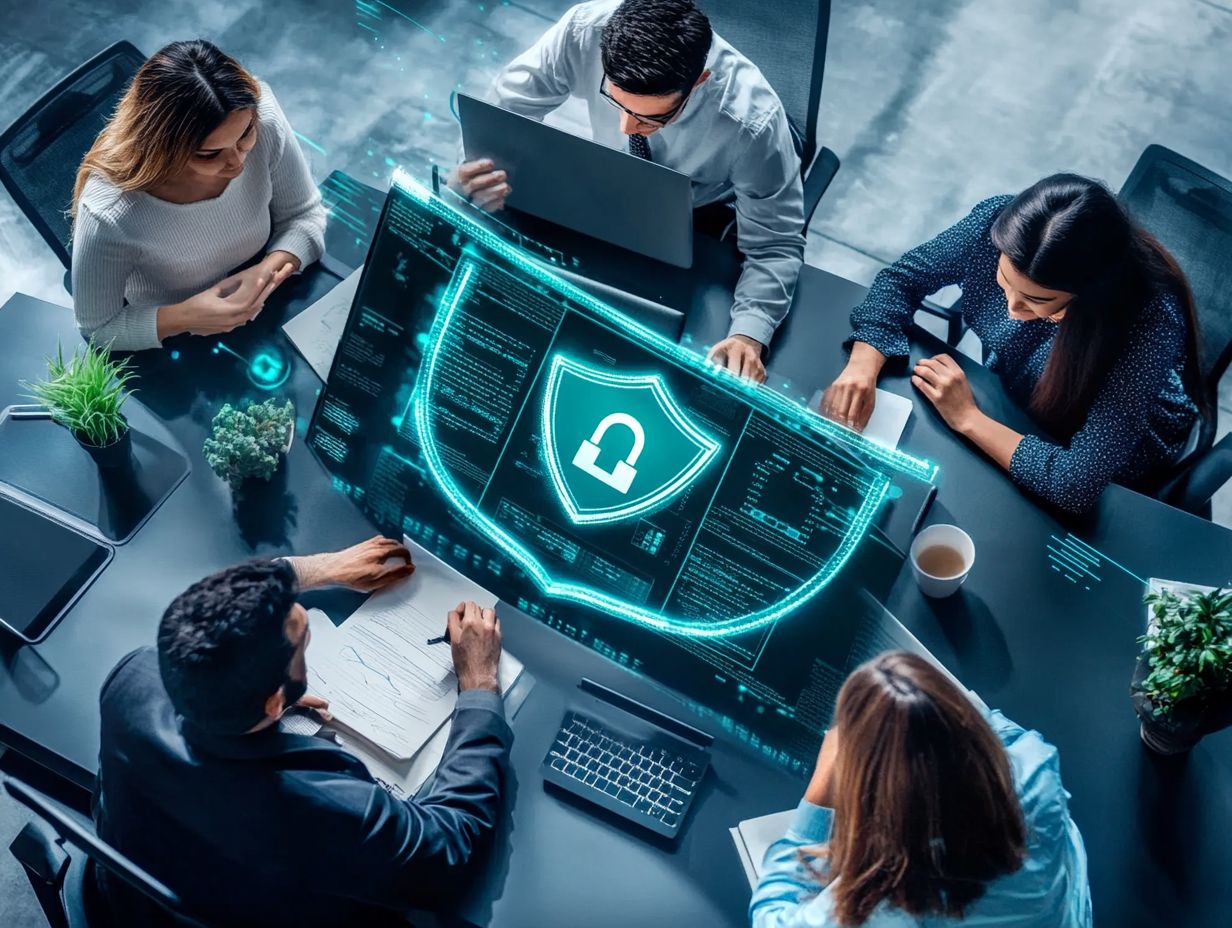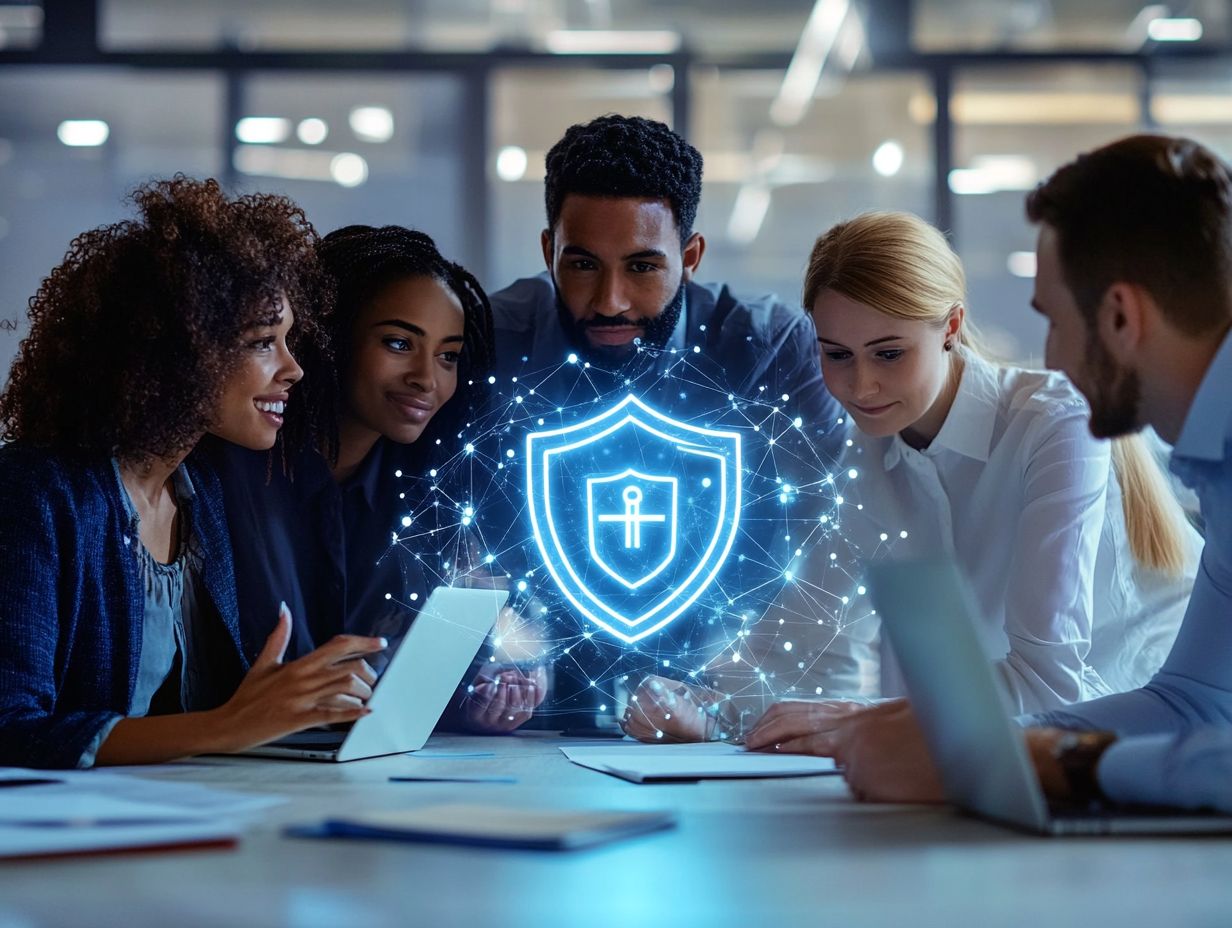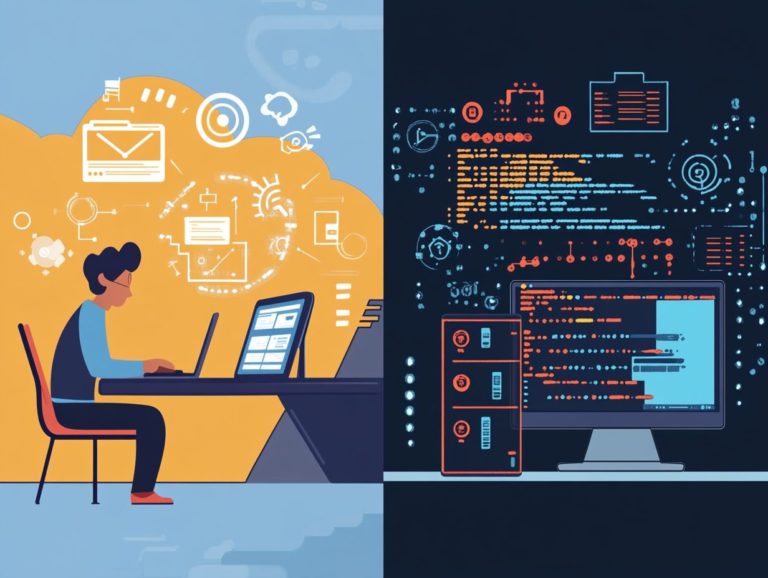How to Enhance Security in SaaS Applications
In today s digital landscape, Software as a Service (SaaS) applications have become essential to your business operations. They provide you with flexibility and scalability that can drive growth.
As your reliance on these tools increases, so do the significant security challenges that accompany them. This article delves into what SaaS applications are, highlights their key features, and underscores the critical importance of security in this domain.
By exploring potential risks and outlining best practices from robust authentication measures to regular security audits we aim to empower you with the knowledge needed to enhance the security of your SaaS applications effectively.
Dive in to uncover strategies to safeguard your data and ensure strong protection for your business.
Contents
Key Takeaways:

Invest in strong authentication measures to protect against unauthorized access to your SaaS applications, especially when considering understanding data privacy in SaaS applications.
Ensure all sensitive data is encrypted to prevent data breaches and meet compliance requirements.
Regularly update and monitor security protocols to stay ahead of potential threats and vulnerabilities.
Understanding SaaS Applications
Software as a Service (SaaS) applications are transforming the way you operate in today s digital landscape. They provide you with unparalleled flexibility and scalability.
This allows multiple clients to use the same resources efficiently while keeping operational risk manageable. SaaS solutions are especially vital in the financial services sector, where regulatory compliance and data protection take center stage.
They enable seamless service delivery and enhance business agility. This ensures you can swiftly respond to the demands of a rapidly evolving market.
Definition and Key Features
SaaS, or Software as a Service, represents a sophisticated cloud-based software delivery model. In this model, applications are expertly hosted by a service provider and seamlessly made available to you over the internet.
You ll appreciate key features such as effortless user access, robust identity management, and efficient data sharing. All of these enhance governance processes with remarkable ease.
This model gives you the power to adopt flexible subscription plans tailored to your specific needs. You only invest in the services you actually use.
Scalability is a cornerstone of this approach. It enables you to swiftly scale up or down in response to evolving requirements without the burden of hefty upfront investments in infrastructure.
Identity management is essential for maintaining security and controlling user access. This highlights the importance of precisely managing who can access what information.
By integrating solid governance frameworks, you can navigate data sharing practices with greater effectiveness. This fosters compliance while minimizing the risks often associated with data breaches.
Importance of Security in SaaS

Security in SaaS is crucial! It protects your data and keeps your business compliant with various regulatory frameworks.
With increasing worries about data breaches and unauthorized access, businesses must act now to prioritize strong security measures. This is especially vital in sectors like financial services, where maintaining customer trust is essential.
Operational risks in cloud environments must be effectively mitigated.
Potential Risks and Consequences
SaaS applications can expose you to various risks. Data breaches and unauthorized access are significant threats.
Such incidents can lead to operational challenges and legal issues. They can also harm your organization s reputation and financial stability.
In today s digital landscape, the impact of these threats goes beyond immediate financial loss. You might face hefty fines for not protecting sensitive information, especially personal data under regulations like GDPR.
The effect on customer trust can be severe. Clients may rethink their relationship with a company after a breach.
To reduce these risks, implement strong incident management strategies. These strategies help you assess and respond to threats swiftly.
They also promote a culture of cybersecurity awareness in your teams, ensuring proactive defense against vulnerabilities.
Best Practices for Securing SaaS Applications
Implementing best practices for SaaS security is crucial. It helps safeguard sensitive data and ensures compliance with regulations.
Consider effective security measures such as:
- Strong access management protocols
- Thorough user permissions
- Advanced encryption methods
Together, these elements will fortify your application against threats.
Implementing Strong Authentication Measures

Using strong login methods, like multi-factor authentication (MFA), is essential for securing your SaaS applications. MFA requires you to verify your identity in multiple ways, reducing unauthorized access risks.
Relying solely on passwords isn t enough today. MFA combines something you know, like your password, with something you possess, such as a smartphone, and even something unique, like your fingerprint.
By adopting this layered security approach, your organization enhances security and builds trust with users.
To stay on track, consider these best practices:
- Regularly update authentication methods.
- Educate users on recognizing phishing attacks.
- Enable alerts for suspicious login attempts.
These strategies align with comprehensive security measures and promote a proactive approach to safeguarding sensitive information.
Ensuring Data Encryption
Data encryption is fundamental for protecting sensitive information in your SaaS applications. It plays a key role in enhancing cloud security and compliance.
Implementing strong encryption protocols keeps your data secure both in transit and at rest. This is especially important given the rise in cyber threats and strict privacy laws.
One effective encryption standard is the Advanced Encryption Standard (AES), often required by regulations like GDPR. Prioritizing these encryption techniques protects personal and financial information and reduces breach risks.
Implementing comprehensive encryption builds client trust and positions your business well in a landscape where compliance is essential.
Regularly Updating and Monitoring Security Protocols
Regularly updating and monitoring your security protocols is essential for maintaining the integrity of your SaaS applications. This helps you detect potential issues quickly and respond to security incidents effectively.
Continuously reviewing your security measures allows them to evolve with emerging threats. Automated tools and regular audits ensure compliance with regulations and foster a culture of security awareness among employees.
These practices create a strong framework for managing incidents. Quick identification and resolution of security issues are vital for protecting sensitive information.
Extra Security Measures for SaaS Applications

In addition to best practices, consider these extra security measures for your SaaS applications.
- Implement multi-factor authentication for added protection.
- Conduct regular security audits to find vulnerabilities before they are exploited.
- Create strong disaster recovery plans to protect against unexpected incidents.
Act now to dramatically boost the security of your SaaS applications!
Implementing Multi-Factor Authentication
Multi-factor authentication (MFA) is a key measure that greatly enhances user access security. It reduces the risk of unauthorized entry by requiring multiple forms of verification.
Typically, MFA combines something you know like your password with something you have, like a mobile device for a one-time code. For example, you enter your password and then receive a text message with a verification code to log in.
By adopting MFA, SaaS providers lower the risk of data breaches. Unauthorized users need more than just a password to access accounts; they also require the second form of verification.
Businesses using MFA often see fewer phishing attacks. The extra verification step serves as a strong defense against compromised credentials.
Conducting Regular Security Audits
Regular security audits are vital to ensure your SaaS applications meet compliance standards and manage risks effectively. These audits help identify vulnerabilities and areas for improvement in your security protocols.
By reviewing your processes and controls, you strengthen your defenses against threats and maintain adherence to industry standards. This proactive approach not only protects sensitive data but also builds trust with stakeholders.
To conduct effective audits, follow these best practices:
- Define a clear scope.
- Use advanced tools for vulnerability assessments.
- Hire experienced professionals for audits.
Integrating your findings into ongoing training shows your commitment to resilience. This ultimately strengthens your organization s governance capabilities.
Implementing Data Backup and Disaster Recovery Plans
Implementing comprehensive data backup and disaster recovery plans is essential for business continuity during unexpected incidents. These plans serve as a safety net, protecting against operational risks and enabling quick data restoration.
In today s digital world, data breaches and system failures can happen at any moment. It s crucial to adopt strong strategies, especially if you use SaaS applications. Regular backups and rigorous testing of recovery processes should be priorities.
Cloud-based solutions can improve accessibility and scalability, helping to minimize downtime. Consider offsite backups to safeguard against physical disasters.
Engaging all stakeholders in planning and updating recovery protocols ensures everyone knows their role in a crisis. This collective effort strengthens your organization s resilience and maintains client confidence.
Frequently Asked Questions
- How can I enhance security in SaaS applications?
Use strong passwords, regularly update software, implement multi-factor authentication, and provide employee training on cybersecurity. - Why is security important in SaaS applications?
SaaS applications store sensitive data and are accessible online, making them targets for hackers. Without proper security, your data could be at risk. - What is multi-factor authentication?
This security measure requires users to provide two or more forms of identification to access an application, such as a password and a biometric scan. It adds an extra layer of security. - What is encryption?
Encryption encodes data so only authorized parties can access it. By using encryption, you protect data from unauthorized access. - Should I use a single sign-on (SSO) solution?
Yes! SSO allows users to access multiple applications with one set of credentials, reducing weak password risks. - What role does employee training play in security?
Training employees on security risks and proper protocols helps prevent mistakes and strengthens overall security.
Take Action Now! Implement better security measures today to protect your data and ensure the safety of your SaaS applications.






